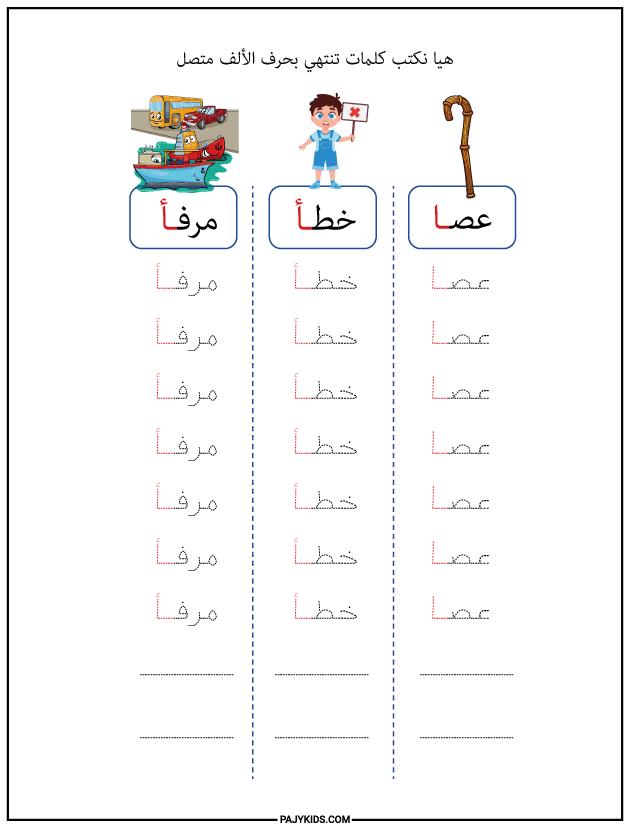Table of contents
Arabic Words with Alif: Teaching the shapes of the Arabic letter Alif (ا) is essential for early learners to build strong reading and writing skills. Since Alif appears differently at the beginning, middle, and end of words, children need structured practice to recognize and write it correctly. These worksheets focus on mastering Arabic words with Alif through engaging and age-appropriate activities.
Understanding the Basics of Alif in Arabic Words
In the Arabic language, the letter Alif (ا) has a unique behavior — it does not connect to the letters that follow it. This feature makes it important for early learners to recognize its different appearances in arabic words with alif. Worksheets focused on the letter Alif help students understand both its connected and unconnected forms through structured, engaging practice.
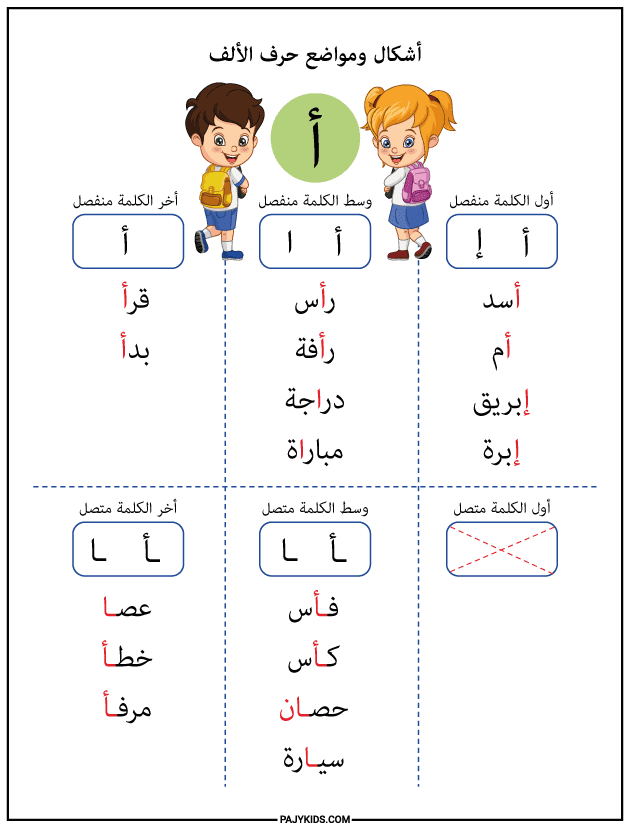
The Shape of Alif at the Beginning of Words
At the start of a word, Alif always appears in its isolated form, such as in “أسد” (Asad) or “أمل” (Amal). Worksheets teaching arabic words with alif in initial position guide learners through writing and identifying this form, reinforcing visual recognition and hand coordination during writing exercises.
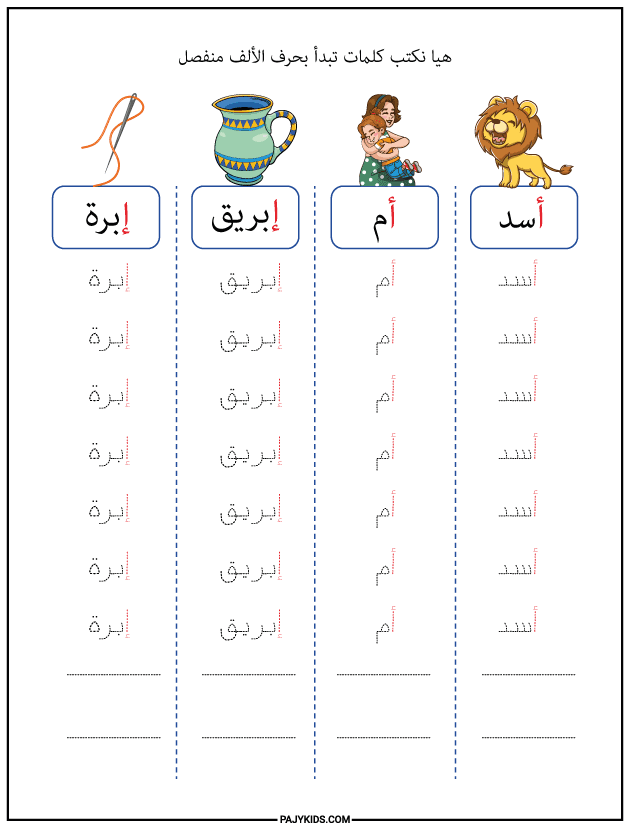
Recognizing Alif in the Middle of Words (Unconnected)
In certain words, Alif appears in the middle and remains unconnected, as in “رأس” (Raas) or “مباراة” (Mubara). These words are vital examples used in worksheets to teach the disconnected mid-word form. Students learn to spot this pattern as part of mastering arabic words with alif in all positions.
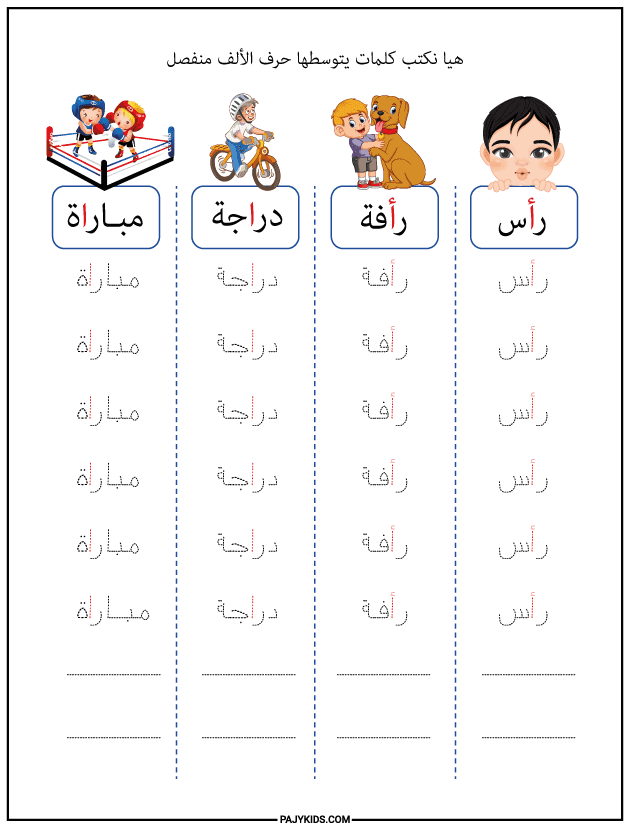
Practicing Alif at the End of Words (Unconnected Form)
When Alif comes at the end of a word and remains unconnected, as in “بدأ” (Bada’) or “قرأ” (Qara’), learners must be able to identify the floating form of Alif. Through targeted worksheets, children practice tracing and writing this position as part of their growing bank of arabic words with alif.
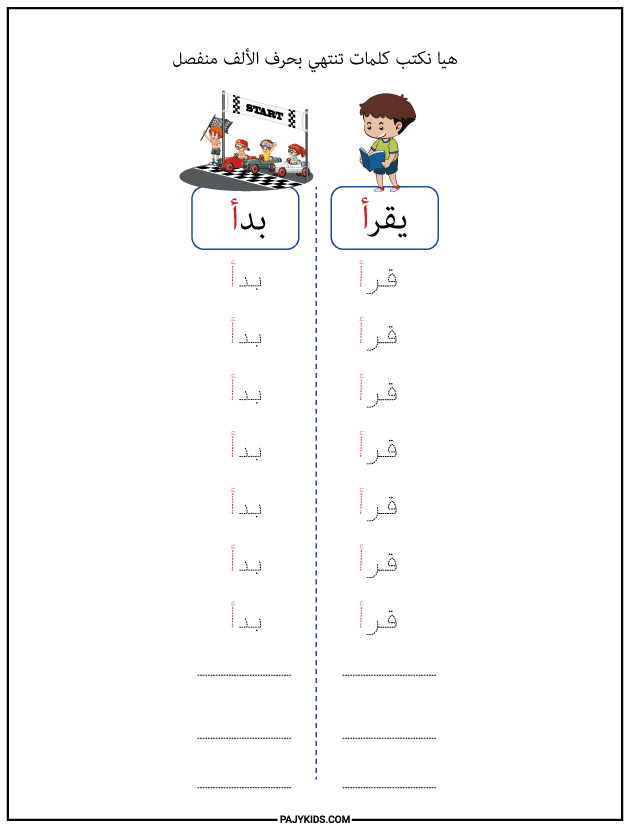
Connected Alif in the Middle of Words: A Special Case
In some less common scenarios, Alif can appear connected in the middle, often when preceded by letters like “ك” or “ف”, as in “فأس” (Faa’s’) or “كأس” (Kaa’s’). Worksheets covering these cases help clarify exceptions and train learners to write the letter in both forms correctly.

The Connected Alif at the End of Words
Although Alif often remains unconnected, it may appear visually connected at the end of some words due to font or writing style, such as in “عصا” (Asa). Teaching these cases using specialized worksheets allows learners to understand stylistic differences while mastering arabic words with alif in real contexts.
See Also: Alif Alphabet Arabic Worksheets for Short Vowel Learning
